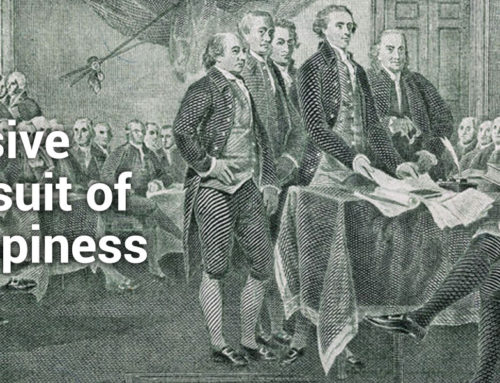In previous blogs (here and here), I have presented a comprehensive model of leadership that I have labeled The Performance Trilogy®. The framework describes the three fundamental processes that must be managed; strategy, execution, and leadership development and the three leadership roles needed for each process; leading, managing and coaching. Leading each of the three processes of the Performance Trilogy® requires very different attributes (i.e. talent and skills). The three most important attributes needed to successfully lead the strategy process are imagination, courage and persuasiveness. The three most important attributes needed to successfully manage the execution process are conscientiousness, productivity and discernment. The three most important attributes needed to successfully coach the leadership development process are integrity, empathy, and teaching skills. These nine attributes are universal and essential for sustainable success in any endeavor you pursue. In this blog we will explore the third of these leadership attributes required during the strategy process, persuasiveness.
Persuasiveness – The ability to influence others to your point of view
My awareness of the power of persuasive communication was dramatically increased during a pitch my team was making to a venture capital firm to spin out a new company from Arthur D. Little. We spent a considerable amount of time preparing for these “dog and pony shows” by sharpening our message about the value of our technology, our understanding of the marketplace and the robustness of our business plan. We were enlightened by one reviewer who told us, “Look, ideas are a dime a dozen and most of them are pretty good; we make investment decisions based on people not ideas. You have five more minutes to convince me that I should invest in YOU!” The lesson we learned that day can be summed up in one of Steven Covey’s seven habits of successful people, “seek to understand, before seeking to be understood”.
To successfully persuade others to believe in your ideas, you must have a strategy that is desirable, achievable, and beneficial in their eyes. People do things for their reasons, not yours. People are not all the same, and they’re certainly not the same as you. To persuade someone to adopt your ideas, you must look inside each individual to gain knowledge of that person’s expectations and needs in order to understand how best to convey your message. I am reminded of a colleague who complained that “our Sector leader claims to have communicated his new strategy to us but all I got was a memo!”
Leaders that communicate well understand the four steps of the transmission and reception process. The four steps are:
- Meaning – What is it that I want to say? Is it clear and unambiguous? Do I mean it?
- Speaking – How am I translating what I mean in both words and body language?
- Reception – What did the other person hear me say? How might he/she have filtered it based on his or her current awareness?
- Understanding – How did the other person interpret what he heard?
How often have you overheard the following reactions to conversations? “Didn’t you just hear what I just said”! That’s not what I meant”! What are you talking about”! These miscommunications arise when you focus only on transmission and pay little attention to reception. I repeat Covey’s quote “seek to understand before seeking to be understood”. This is best accomplished by a technique that most of us know but rarely practice called “active listening”.
Listening is hard work intellectually and emotionally and is more tiring than talking because it requires total concentration. I must admit that listening is one of my most serious weaknesses. While people are speaking to me at approximately 100 words a minute, I oftentimes hear what they say, interpret what they mean and interrupt before they even finish what they were going to say. On those occasions when I do practice active listening, my ability to communicate dramatically improves and the results I get are significantly better. It’s a work in progress for me.
Upon finishing your message (transmission), ask the person or group to whom you are speaking to tell you what they heard (reception). This is an effective way to probe not only what message they heard but also how they interpreted it in their own minds. When listening to someone speak, paraphrase what they said to provide feedback on your interpretation of their meaning. Sometimes it will take two or three iterations to achieve true communication. You know you are successfully communicating when your audience tells you “We heard what you said and understand what you meant”. This is the true meaning of the expression “meeting of the minds”.
Graffeo and Associates is an organization committed to improving the quality of leadership in science and technology (S&T). It was formed in 2008 around the expertise of Dr. Tony Graffeo, a senior executive from Arthur D. Little and Battelle Memorial Institute. Dr. Graffeo has consulted with leading research institutions in the United States, Europe, Latin America and the Middle East, and has created a codified system of leadership development centered around the principles of the Performance Trilogy® which he has taught throughout the world. He is currently a professor at Northeastern University teaching Professional Masters entrepreneurship and leadership courses. His new book, titled “Leading Science & Technology-Based Organizations: Mastering the Fundamentals of Personal, Managerial, and Executive Leadership” will be published in 2018.



